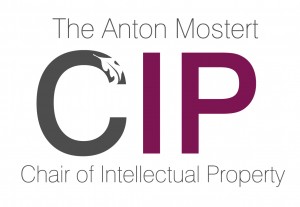
INTRODUCTION
Have you ever basked in the warm sunshine of a glorious summer’s day, in daydreaming mode, and allowed your mind simply to wander at random? You start with a thought, you turn it over in your mind, and then a point is reached where you go off at a tangent and muse over some largely unrelated thought, only to be diverted in yet another direction. Eventually you may go the full circle and come back momentarily to the point of departure, before heading off again elsewhere. Daydreaming can be a very pleasant experience and it has the beauty that you do not have to make any decisions or reach any conclusions. Your mind is free to roam at will.
The Department of Trade and Industry has issued a document entitled “Draft National Policy on Intellectual Property, 2013” (“DNPIP”) in General Notice No.918 of 2013, published in the Government Gazette of 4 September 2013 (full text here ![]() ). In this notice an invitation has been extended for the public to comment on the DNPIP. To do so, of course, requires the document to be studied. Ay, there’s the rub! Reading the DNPIP calls to mind daydreaming as the document creates the impression that it is a record of someone’s languid reverie.
). In this notice an invitation has been extended for the public to comment on the DNPIP. To do so, of course, requires the document to be studied. Ay, there’s the rub! Reading the DNPIP calls to mind daydreaming as the document creates the impression that it is a record of someone’s languid reverie.
This Chair of Intellectual Property Law (CIP) has heeded to the call to comment and it has submitted a comprehensive brief to the DTI. The CIP’s comments consist of a suite of separate, but related, complementary documents comprising the following:
1. An overview of the DNPIP, as a whole, prepared by Professor OH Dean, Chair of IP Law.
2. A commentary on those aspects of the DNPIP dealing primarily with copyright, trade marks and related issues prepared by Professor OH Dean.
3. A commentary on primarily patents, design and technology transfer matters prepared by Dr M Kleyn, a Fellow of the CIP.
4. A commentary dealing primarily with matters pertaining to the internet prepared by Mr C Jooste, a Fellow of the CIP.
5. A commentary dealing primarily with computer programmes prepared by Dr S Karjiker, a Fellow of the CIP.
The brief can be accessed here ![]() . The views expressed in the brief have much in common with comments submitted to the DTI by Judge/Professor Louis Harms. His comments can be accessed here
. The views expressed in the brief have much in common with comments submitted to the DTI by Judge/Professor Louis Harms. His comments can be accessed here ![]() . The CIP is thus in good company in its estimation of the DNPIP. Not to be outdone, the Vine Oracle has seized this opportunity to offer its own ten cents worth.
. The CIP is thus in good company in its estimation of the DNPIP. Not to be outdone, the Vine Oracle has seized this opportunity to offer its own ten cents worth.
A LONG AND WINDING ROAD
The layout and presentation of the DNPIP makes a discussion of it a difficult chore. This is so because, with respect, its layout and presentation have shortcomings which are not conducive to a systematic and consequential analysis of it. The document’s language and syntax, as well as its classification of subject matter, are often confusing with the result that it is difficult to comprehend what the author is saying. It has indeed been described as “an incoherent stream of consciousness”.
The document has sections of its initial portion dealing with “objectives” and “background-problem statement”. The stated objectives are perfectly laudable but are not comprehensive for purposes of a policy document. For instance, the section is silent on the issues of joining and implementing the provisions of International Intellectual Property Agreements, and most importantly, taking steps to ensure that our Intellectual Property Legislation stays up to date and relevant in a rapidly evolving intellectual property environment..
The purported problem statement lists a series of characteristics with which it is apparently suggested that the current situation in South Africa complies. When this list is weighed up against the objectives of the policy, one cannot help but asking: “what is the problem?” because it seems as though the stated objectives are already met.
The document provides discussion in various chapters, which overlap somewhat, and which collectively do not provide comprehensive coverage of the field of intellectual property. It is difficult to ascertain what the document in its entirety has to say on any particular topic.
UNPACKING THE MISSIVE
The document purports to be an exposition of the Government’s policy on Intellectual Property. Outwardly, it has the appearance of a policy document consisting of a number of issues on which there is a discourse, followed by statements labelled as “recommendations”. However, the discourses are frequently renditions of the subjective views of the author on wide ranging and disparate issues of intellectual property without giving rise to any meaningful resolutions as to what stances should be adopted or action should be taken by the Government. The range of subjects covered by the document is by no means comprehensive or exhaustive of pertinent issues pertaining to intellectual property and one is left wondering why certain important issues have been omitted from the review. For instance, the document is completely silent on anything to do with the Performer’s Protection Act, the Registration of Copyright in Cinematograph Films Act, the Counterfeit Goods Act and counterfeiting in general, and the Intellectual Property Rights from Publicly Financed Research and Development Act (the author seems to be unaware of the existence of this latter Act).
Is one to assume that the Government has no policy on these matters or that they do not rank as sufficiently important to be covered by a statement of policy? On the other hand, the document makes reference to the Heraldry Act and suggests that it is part of the general body of law dealing with intellectual property. Nowhere in the world, that the Vine Oracle is aware of, is heraldry considered to be a species of Intellectual Property Law.
The document has a few basic themes about which it pontificates (sometimes hollowly). These include the imbalance between the strengths of the positions of developed countries and developing countries (into which group it is considered that South Africa falls); the fact that there should be co-operation and co-ordination between the various government departments and entities that are seized with various aspects of intellectual property, such as the Department of Trade and Industry, the Department of Science and Technology, the Department of Communications and others (it is doubtful whether any of these have been consulted on the contents of the DNPIP); the fact that developed countries attempt to impose obligations on developing countries over and above those imposed by the various international treaties in the field and that, on the contrary, there is rather a need to limit the restrictions on free activity imposed by the Intellectual Property Treaties; Patent Law, and especially the non-examination of South African patent applications is a direct cause of excessive costs of medicines; Intellectual Property laws are anti-competitive and our law provides little redress for this situation. Regrettably, the discourses on these issues, while perhaps being pertinent issues appropriate for being addressed, give rise to very little if any concrete and positive proposals as to what the way forward should be.
There are instances where the document focuses on issues and discusses them critically, despite it being stated unequivocally, and correctly, that these issues are not, or are no longer, pertinent in contemporary intellectual property. What is the point?
The document is littered with purported “recommendations”. As a general pattern, these recommendations follow on after a discourse on a particular subject. There are some recommendations which are reasoned and which flow from the preceding discourse. On the other hand, there are recommendations which are not preceded by any discourse and are thus unmotivated. In some instances, recommendations are self-evident, trite or are platitudes. Some are absurd. As a general proposition, the recommendations lack particularity and do not specify concrete steps or procedures to give rise to their practical implementation. On the whole, they amount to little more than vague expressions of intent or hope.
In general, the document displays an alarming lack of understanding or knowledge of existing IP law and several of the discourses and recommendations flowing from them are tainted and undermined by this factor.
OPPORTUNITY TO COMMENT? COGENT EVIDENCE OF THE NEED TO REDRAFT!
The DNPIP has been made available for comment by the public and it is therefore presumably intended to be capable of being understood by the general public. For a number of reasons, not in the least its tortuous presentation and expression, it will be largely incomprehensible to the general public. Their ability to comment meaningfully on it is therefore seriously limited. Part of the reason why the document will be incomprehensible to the general public is that it makes use of terminology (without appropriate explanations) which is foreign to them. Try this one for size: “many BITS deal with IP issues and introduce TRIPS – PLUS, TRIMS – PLUS and SCM – Plus in many respects”. Indeed, this statement is barely comprehensible to the cognoscenti! Never mind the general public having difficulty in understanding the policy document, it is difficult to see how members of government, who ultimately will be seized with the adoption or otherwise of the policy, will be able to comprehend it and be able to evaluate its worth, or lack thereof.
In the final analysis, the DNPIP is unsatisfactory and it requires to be redrafted so as to make it a comprehensive policy document, dealing with all aspects of intellectual property law, which is rational, well-motivated and comprehensible to the uninitiated. It is recommended that the present document should be regarded as no more than a first tentative attempt to highlight some (but by no means all) of the issues which may possibly have to be addressed in formulating a policy on intellectual property. Once the DTI has collected its thoughts properly on the issue of IP policy, professional consultants, skilled in intellectual property and in drafting documents such as policy reviews, should be commissioned to prepare an appropriate document. In this manner the process of adopting a policy on intellectual property can be taken forward in a rational, practical and effective manner. However, the DTI is to be commended for trying!
Office of the Chair of Intellectual Property
Stellenbosch University




 Follow
Follow

